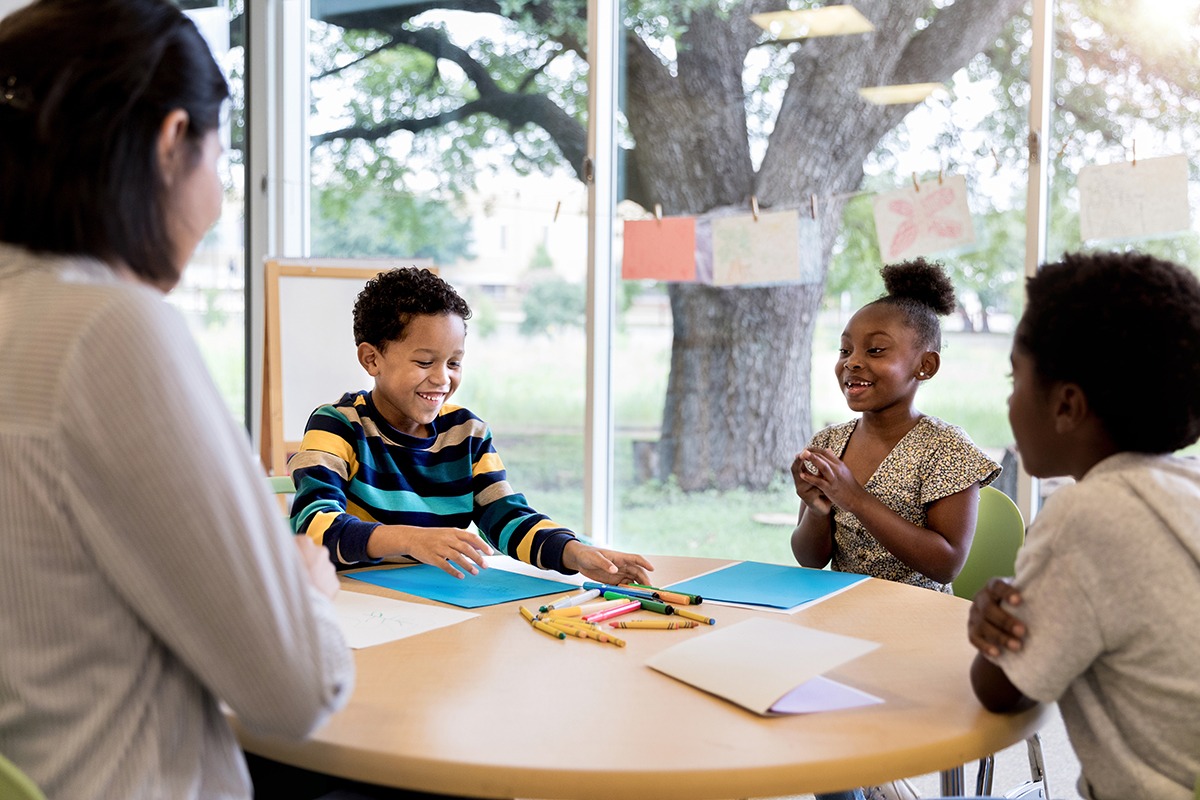
September 26, 2019 8:00 am
Each of these terms has been in the education lexicon for a while now, but what do they mean? More importantly, why do they matter to educators?
Personalized, differentiated, and individualized learning — each of these terms has been in the education lexicon for a while now, but what do they mean? Are they three different ways of saying the same thing? If not, how do they differ? In this What’s Up With piece, we go over these three terms, and why they matter to educators and students.

Perhaps, the oldest concept of the three, differentiated learning involves “address[ing] the needs of all students, who may be at varying levels, within a single classroom,” according to eSchool News. This can be done by grouping students by their level of understanding or ability, and then providing each group of students with a lesson that has been adapted to meet their skill level.
According to iNACOL, when educators personalize learning, they are “tailoring learning for each student’s strengths, needs, and interests — including enabling student voice and choice in what, how, when, and where they learn — to provide flexibility and supports to ensure mastery of the highest standards possible.”
Put simply, personalized learning takes a student’s needs, skills, and preferred learning style into consideration, and gives them more control over and say in their learning.
Individualized learning is exactly what it sounds like — instruction that is built to an individual student’s specific needs. A good example of individualized learning is extra help in the form of tutoring. Typically delivered one-to-one, tutoring is highly customized to address a student’s specific questions, some of which may result from their ability or skill level. Another common way educators and students experience individualized learning is with IEPs (individualized education programs).
Personalized, differentiated, and individualized learning are all ways of customizing learning to better meet student needs. They all take into account that students are different and have varying levels of skill and ability, and aim to alter instruction and the learning experience to better cater to students.
The biggest difference between each of these terms is the degree to which instruction is customized for the individual student.
Think of it as an upside-down pyramid. Differentiated instruction would be at the top, with the least amount of customization. Next would be personalized instruction, with more customization. Finally, at the bottom would be individualized instruction, which is highly customized to the individual student.
Another difference between these concepts is in how much involvement the student has in directing their learning. With both differentiation and individualization, the student is more of a participant in their learning than a leader, whereas in true personalization, the student works together with the instructor to design a learning system and path that works specifically for them, their interests, and their abilities.
In a perfect world, every student would get one-to-one, highly individualized instruction from an excellent teacher. Unfortunately, we don’t live in a perfect world, so innovative and creative educators have found ways to customize instruction, both with and without the use of technology.
The first step in differentiating, personalizing, and individualizing instruction is to determine your students’ individual skill levels and abilities, as well as if they need any special accommodations to promote and support their learning. Once you’ve been able to determine that, you can then group students together by ability or skill level (differentiation), adjust your lesson plans and the way instruction is delivered to better align with student needs and learning styles (personalization), and highly customize both the content and your instruction as students need (individualize).
Being able to use technology to identify where students are thriving and struggling, group students together, monitor their progress, and formatively assess them can make personalizing, differentiating, and individualizing instruction not only possible, but easy.
ABEL, N. (2016, FEBRUARY 17). WHAT IS PERSONALIZED LEARNING? INACOL. RETRIEVED FROM HTTPS://WWW.INACOL.ORG/NEWS/WHAT-IS-PERSONALIZED-LEARNING/
BASYE, D. (2018, JANUARY 24). PERSONALIZED VS. DIFFERENTIATED VS. INDIVIDUALIZED LEARNING. ISTE BLOG. RETRIEVED FROM HTTPS://WWW.ISTE.ORG/EXPLORE/EDUCATION-LEADERSHIP/PERSONALIZED-VS.-DIFFERENTIATED-VS.-INDIVIDUALIZED-LEARNING
FREELAND FISHER, J. (2017, APRIL 25). WHAT’S THE DIFFERENCE BETWEEN BLENDED AND PERSONALIZED LEARNING? CHRISTENSEN INSTITUTE. RETRIEVED FROM HTTPS://WWW.CHRISTENSENINSTITUTE.ORG/BLOG/WHATS-DIFFERENCE-BLENDED-PERSONALIZED-LEARNING/
STEDKE, A. (2017, AUGUST 1). DIFFERENTIATION, INDIVIDUALIZATION AND PERSONALIZATION: WHAT THEY MEAN, AND WHERE THEY’RE HEADED. ESCHOOL NEWS. RETRIEVED FROM HTTPS://WWW.ESCHOOLNEWS.COM/2017/08/01/DIFFERENTIATION-INDIVIDUALIZATION/?ALL